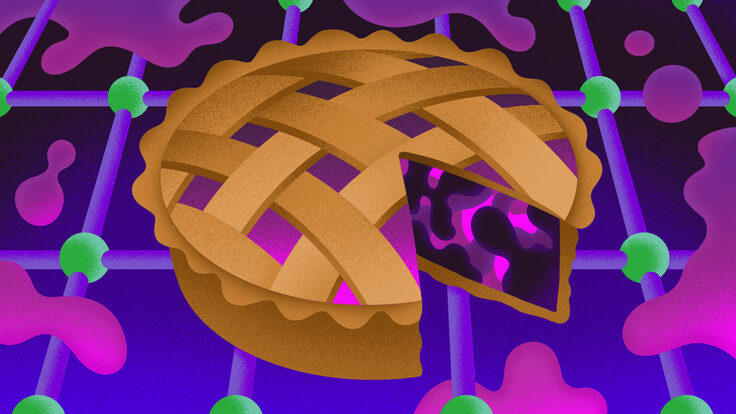Today Fermilab physicist Scott Dodelson makes a prediction about what he thinks is the next big thing in astrophysics: using observations of hydrogen to map the universe in space AND time, a huge step forward from our current tools we use to map the universe. The work would help scientists understand the nature of dark energy and the evolution of the universe going back to a very early time.
At the moment, some of our best information about the structure and shape of the universe comes from the cosmic microwave background. However, the CMB only represents the state of the universe at one particular time, when the universe was 379,000 years old. (Yes, we know the age that precisely!) The advantage of looking at hydrogen is that scientists can look at the structure of the universe at different times. We're going to wade into some of the technical details of this but I'll try to be gentle!
Redshift lets us see back in time
The reason that scientists can see back to different times is due to what is called redshift. As objects move away from you, any light they emit drops drop in frequency or becomes redder. This is analogous to the difference in sound pitch between a siren you hear stationary next to you and when it is driving away and has a lower pitch.
So why does the idea that something is moving away help? Well, the whole universe is expanding and the objects further away are moving away faster. It also takes more time for that light to reach us. When you combine all these factors together, it turns out that older parts of the universe have a greater redshift for any light they emit.
What light is useful
To map the universe for different times, all you need to do is find some kind of light that is being emitted throughout the universe, and has been emitted at all times. Nature provides us with a very convenient source for this. Hydrogen atoms have existed since the universe was 379,000 years old. (Yes, there is a connection between the existence of hydrogen and the creation of the cosmic microwave background!) So physicists want to look at hydrogen for the standard signal it emits.
But what signal comes from hydrogen? If you send a lot of electricity into a gas of hydrogen, it will give off a reddish glow that I remember well from high-school physics classes. The electricity excites the electron that orbits the proton. As the electron jumps up and falls back down, it emits different colors of light depending on exactly which jump it makes. In visible light, hydrogen emits red, cyan, and blue most strongly. However, visible light isn't much use for this kind of astronomical observation. Instead, physicists target something called the 21-cm line, a radiofrequency emission.
Seeing in radio
The hydrogen 21-cm line is named for the wavelength of the radio waves that are emitted from hydrogen, if the hydrogen is stationary when you measure it. It appears longer when it is redshifted.
It's not the usual kind of emission where an electron is boosted up to a higher energy level and drops back down again. Instead, the transition is between the spin of the electron and proton being in opposite directions to being in the same direction: It's called the hyperfine splitting for the physics-ravenous. This is a "forbidden" transition because it only happens under rare circumstances or via an intermediate process, but there is so much hydrogen out there in the universe that the signal is really clear to radio-astronomers. It makes an ideal signal to look for in these studies that map the universe over space AND time.
Prospects for an experiment
Fermilab has proposed one particular experiment to the Department of Energy but there are half a dozen other proposals in preparation around the world. There is a lot of excitement about the technique because of its potential to reveal a lot of information about the universe and it will make a huge difference in answering some of the pressing cosmological questions.






